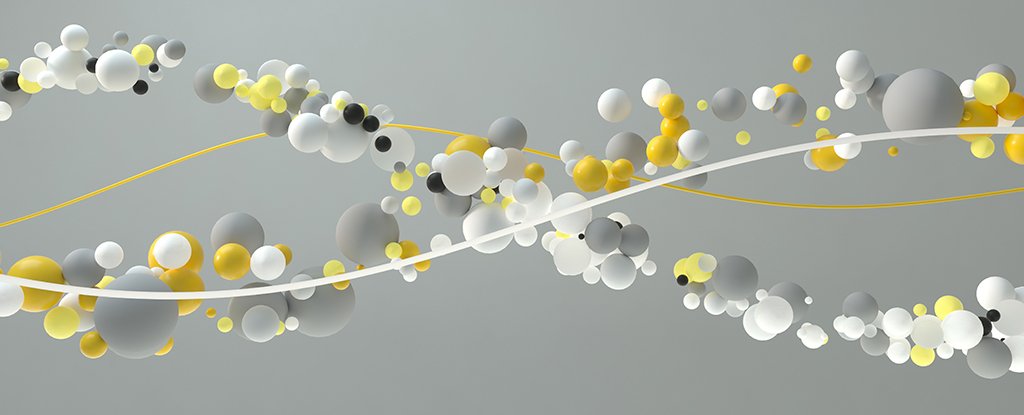Mistakes happen. Especially when it comes to the replication of vast sequences of DNA inside our cells. It's a good thing too. If not for the errors in our genes we refer to as mutations, natural selection would be a no-go, and life would be dead in the water.
As crucial as mutations are to everything from disease to biodiversity, we know shockingly little about the physics of the process.
Findings from the University of Surrey in the UK have revived speculations that a primary trigger behind the chemical sleight-of-hand that spontaneously swaps one coded base for another is quantum in nature.
Specifically, a significant part of the mutation process is the displacement of a single hydrogen that glues together the genetic bases to make the 'rungs' of DNA's twisted ladder structure. This occurs through the process of tunneling, breaking bonds between the genetic bases of guanine and cytosine over time scales that permit permanent changes.
Quantum tunneling is a natural consequence of the uncertainty in a particle's characteristics under confined conditions.
Zoom in close on a subatomic object, such as a proton, and its position becomes increasingly vague.
Objects on this scale can theoretically exist beyond the bounds of a confining barrier, seeming to 'tunnel' their way through walls as easily as a ghost moving through a haunted house.
Though a fundamental feature of reality on a quantum level, how a particle's features entangle with other particles jostling about in warm, noisy environments ensures it doesn't easily scale into the macro Universe.
Or so we've long assumed.
"Biologists would typically expect tunneling to play a significant role only at low temperatures and in relatively simple systems," says chemist Marco Sacchi.
"Therefore, they tended to discount quantum effects in DNA. With our study, we believe we have proved that these assumptions do not hold."
The team's theoretical modeling of the changing in bonds between guanine and cytosine bases challenges several assumptions surrounding the chemistry behind this common form of mutation.
Since the early days of studying the structures and chemistry of DNA, scientists thought that a primary cause of mutation is the translocation of hydrogens that bond bases on opposing DNA strands.
This movement can turn the base into a tautomer – a new molecule with the same shape as previously but a subtle, different configuration of elements.
It's thought that the hydrogens leap across the boundary between strands through a process called a double proton transfer, an action that looks surprisingly like a quantum tunneling event.
Yet aside from the assumption that biological systems are just too hot and busy for such a quantum event to occur, any double proton transfer occurring through this manner should be ironed out by the cell's editing enzymes.
Looking more carefully at the physics behind the process, the researchers have demonstrated under the temperature conditions of a typical cell that quantum effects should be causing the protons to hum back and forth at a high rate, causing the bases to blur into their tautomers.
Since the time spent as a tautomer is fleeting, the replication machinery copying a strand of DNA will hardly recognize its presence.
Yet if this process results in some kind of imbalance between bases, shifting the ratios of a base and its tautomer in some way, it's highly possible the shift can be locked into place as a mutation.
What's more, mathematically speaking, the presence of these ghostly tautomer versions of each base is great enough for this particular category of mutation to be far more common than we realize.
It'll take future experiments to confirm predictions made in the study, especially around things like rates of proton hopping at different temperatures.
It's also left to be demonstrated whether quantum effects play a role in other changes of base pairs or even in other kinds of mutation.
Biologists are slowly waking to the role quantum uncertainty plays in a range of biochemical processes though.
It's increasingly clear that the boundaries of the quantum universe aren't as solid as we might imagine.
This research was published in Nature Communications.
- Karlston, flash48 and Mutton
-

 3
3



Recommended Comments
There are no comments to display.
Join the conversation
You can post now and register later. If you have an account, sign in now to post with your account.
Note: Your post will require moderator approval before it will be visible.